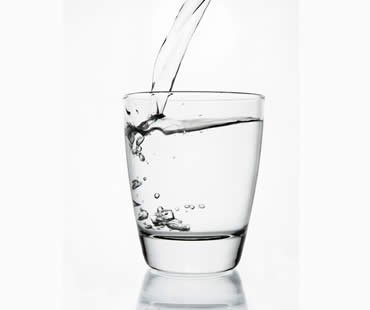
Restorative dentistry has made incredible advancements in the technology of restorative dental materials, and there are more options than ever today for your dental crown or dental bridge. Zirconium and porcelain have proven to provide lasting strength and durability, exhibiting the most natural cosmetic dental restorations available today. Each tooth in each mouth is different, however, and in some cases, resin composite or metal alloy might be the choice recommended for you.
Metals are a common choice for dental crowns and dental bridges. Gold or palladium alloys, as well as chromium or nickel (base-metal) alloys can be excellent choices. Metal alloy crowns show the least “wear down” over years of use. They almost never chip, break or wear down opposing teeth. The primary complaint about metal alloy materials is that their color is metallic and thereby unnatural. They will not blend with the surrounding teeth, and as such, they are chosen more for back molars where they won’t draw attention.
Dental composite/resin materials are a popular choice that can be made to blend with the surrounding teeth, but they’ve been shown to wear down over time and are more prone to fractures and breaking than other materials.
Porcelain can be fused to metal to form a natural-appearing crown or bridge, and because of their appearance, are a good choice for front or back teeth. Over time, however, discoloration can appear along the gum line as the porcelain wears away, leaving a dark, unsightly line. The porcelain can be fused to zirconium, however, which eliminates the dark line and is a good cosmetic choice for front teeth.
Crowns and bridges can also be made from all-porcelain or all-ceramic materials. These materials are the best choice for natural-looking teeth of the types of dental crown and dental bridge materials available in restorative dentistry today. Because they contain no metal, they are excellent choices for patients with metal allergies. They tend to be weaker and less durable than materials containing metals, however.
Talk to your cosmetic dentist today with any questions you have regarding what type of dental crown or bridge material is best for your smile needs.
We look forward to seeing you in our Sicklerville dental office

If you have damaged or decayed teeth you may be considering options to restore both the look and function of your smile. Crowns and veneers are both utilized by cosmetic dentists to accomplish these goals. Which should you choose? Both crowns and veneers have pros and cons, and some distinct differences.
A crown is a cap that is placed over the tooth to reinforce the tooth and restore its original size and shape. Crowns are bonded into place and cover the entire tooth that is visible above the gum line. Crowns are most often used when the tooth has serious problems with structural integrity, often caused by decay. Cracked, broken, or worn down teeth also get crowns. Crowns modify how the tooth looks, and can help restore a more perfect smile. Crowns can be made of stainless steel, resin, porcelain, ceramic and other metals.
Veneers are similar to crowns in that they are used to restore the appearance of a tooth. Veneers utilize a thin shell of either porcelain or composite material that is placed over the tooth to protect it from damage and correct its appearance. Veneers require the structure of the tooth surface to be altered to bond it to the tooth.
Veneers are most commonly used to restore the outward appearance of a tooth, while crowns are typically used for structural repair. If your goal is simply to change the appearance of your teeth, veneers may be the best option. If you have extensive tooth decay or trauma, a crown might be the best choice. Consult with your dental professional to find out if a crown or veneers would be most appropriate for your specific dental issues.
We look forward to seeing you in our Sicklerville dental office

Some people have the wrong idea that taking their children to the dentist isn’t that important, and that it’s really a healthcare choice for adulthood. Young teeth are vulnerable to bacteria that lead to cavities and gum disease, so teaching your kids how to practice good dental hygiene is a must. However, it’s just as important to get into the habit of taking your kids for regular checkups at the dentist.
Does it matter which dentist we choose?:
Sometimes the hardest part about the whole process is talking your child into seeing a dentist. Many kids are afraid of the dentist, even if it’s just the idea of an unknown experience. Then once they go to the dentist and see all the unfamiliar and sometimes noisy equipment, you can be in for an uphill battle. That’s why it’s important to choose a dentist who is experienced in treating kids and equipped for their unique needs. Select a dental office that strives to make kids comfortable and helps them through the process. You may even want to consider a pediatric dentist, who specializes only in treating kids.
What can we expect at a checkup?:
The goal of a dental visit is to clean and protect your child’s teeth, and to prevent and treat diseases or other problems. The dentist will start with an examination and X-rays if needed, in order to get a better view of your child’s oral health. The appointment will also include a teeth cleaning, which provides a much more thorough and deep cleaning than your child is able to perform at home. If there are any problems diagnosed, treatment procedures will be discussed and you can decide with the dentist how to proceed.
If you live in the Sicklerville area contact us today

Does your mouth feel like it’s full of cotton? Or does it remind you of the Sahara Desert? Having an overly dry mouth can result from a variety of dental and medical issues. For example, one common culprit of dry mouth symptoms is related to medications. The best long-term solution is to consult your dentist or physician to determine the root cause of your dry mouth, and to get treatment to solve the problem. Sometimes all that is needed is to change to a different medication, and your dry mouth will disappear. However, here are some things you can try to temporarily relieve your dry mouth until you are able to determine what is causing it.
- Sip water often.
- Limit caffeine consumption, which can dry out your mouth even more.
- Chew sugarless gum or suck on sugarless hard candy.
- Use an over-the-counter saliva substitute, such as Biotene.
- Do not use tobacco products of any kind.
- Do not use mouthwashes containing alcohol, because it can be drying.
- Avoid over-the-counter antihistamines and decongestants, which can worsen your dryness symptoms.
- Add moisture to the air using a humidifier.
- Try to breathe through your nose instead of your mouth.
If you do experience the symptoms of dry mouth, it’s especially important to protect your oral health. Make sure you brush your teeth with toothpaste containing fluoride, and ask your dentist if prescription fluoride toothpaste would benefit you. Use a fluoride mouth rinse before bed to add an extra layer of protection for your teeth. Limit the amount of sugary foods or items high in acids, as both of these types of foods increase your risk of tooth decay. Following these tips for relieving dry mouth symptoms can make it more comfortable for you to eat, swallow, and talk.
Our dental office is located in Sicklerville

If you’re unhappy with your smile, porcelain veneers might be a solution that you’re considering. These thin shells are placed over your teeth to make them whiter, straighter, and more appealing. Here are some facts that address some of the myths about porcelain veneers to help you make a better choice.
Myth: Large portions of your teeth must be removed when applying veneers.
Fact: Only a very small layer of your teeth needs to be removed so that veneers can be bonded onto them. The amount removed is usually as thin as a contact lens.
Myth: Porcelain veneers do not look natural.
Fact: When properly attached to your teeth, veneers become part of your mouth structure and are virtually indistinguishable from your real teeth. They also feel like your natural teeth.
Myth: Getting veneers is very painful.
Fact: Preparing your teeth for veneers is not painful because the dentist usually uses a topical anesthetic to relieve any discomfort. Having a model made of your mouth and then having the veneers bonded to your teeth are painless steps in the process. You might experience increased sensitivity to hot and cold foods initially after getting veneers, but that sensation dissipates within a few days.
Myth: Veneers are so expensive that only the rich can afford them.
Fact: Many dentists offer porcelain veneers, so the costs have decreased as popularity has increased. Dental veneers are not just for celebrities.
We treat patients from Sicklerville and the surrounding area

In the past, replacing lost teeth meant getting dentures or bridges. Even though these offered the best way at the time to restore your mouth’s appearance and function, technology has improved through the development of dental implants. The main drawbacks of bridges and dentures is that they do not feel or look just like real teeth, and it is difficult to chew tough foods. The advantage of implants is that they look and perform so well that you can’t even tell they are not your natural teeth.
Made from titanium, dental implants are screws that are surgically placed directly into your jawbone. They are light and malleable, but durable and strong. The titanium screws are implanted into your jawbone and given time to heal. Once healing is complete, one or multiple crowns are placed on top of the implant to recreate your missing teeth. One implant can hold more than one screw, so it is possible to attach as many crowns as needed to replace your missing teeth.
Dental implants look so much like real teeth that others won’t even be able to tell that you have any artificial teeth. You might even forget about it yourself, as they feel real as well. Since the implants are securely placed in your jaw, they are as strong as real teeth and you are able to chew and bite anything that you would normally eat. Another great thing about implants is that they don’t impact any of your adjacent healthy teeth. While bridges and dentures can sometimes damage neighboring teeth because those teeth are necessary for support, implants avoid this problem. You are left with a fully restored and comfortable smile.
If you need a dentist in Sicklerville contact us today












